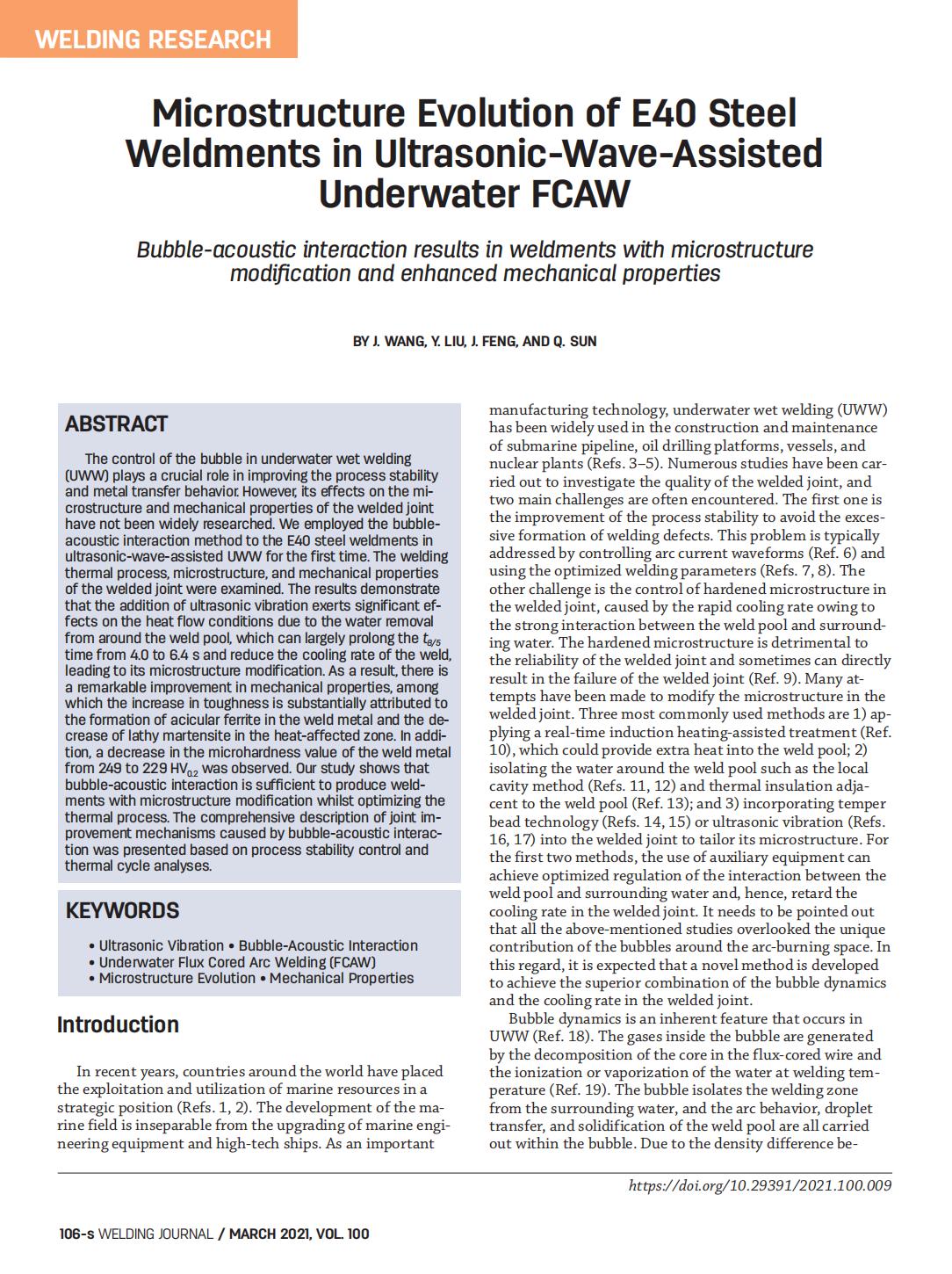The control of the bubble in underwater wet welding (UWW) plays a crucial role in improving the process stability and metal transfer behavior. However, its effects on the microstructure and mechanical properties of the welded joint have not been widely researched. We employed the bubble-acoustic interaction method to the E40 steel weldments in ultrasonic-wave-assisted UWW for the first time. The welding thermal process, microstructure, and mechanical properties of the welded joint were examined. The results demonstrate that the addition of ultrasonic vibration exerts significant effects on the heat flow conditions due to the water removal from around the weld pool, which can largely prolong the t8/5 time from 4.0 to 6.4 s and reduce the cooling rate of the weld, leading to its microstructure modification. As a result, there is a remarkable improvement in mechanical properties, among which the increase in toughness is substantially attributed to the formation of acicular ferrite in the weld metal and the decrease of lathy martensite in the heat-affected zone. In addition, a decrease in the microhardness value of the weld metal from 249 to 229 HV0.2 was observed. Our study shows that bubble-acoustic interaction is sufficient to produce weldments with microstructure modification whilst optimizing the thermal process. The comprehensive description of joint improvement mechanisms caused by bubble-acoustic interaction was presented based on process stability control and thermal cycle analyses.
